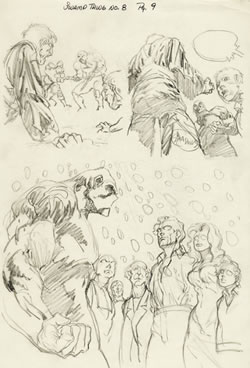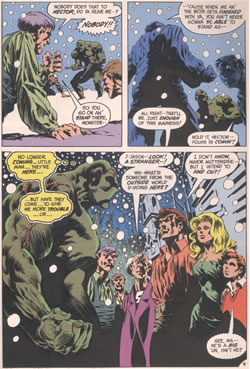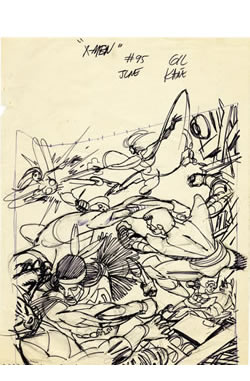
Here's an example of a thumbnail rough by cult artist Berni Wrightson, from his career-making run on DC's Swamp Thing. Wrightson establishes the placement of the main figures, the lighting and the "camera angles" but little else.

In the final page the backgrounds have been added but the inked art has follows the thumbnail sketch remarkably accurately. Wrightson has also remembered to leave sufficient space for the speech balloons.

Kane's technique here is to solve the tricky layout in a thumbnail before spending any time on the final drawing. Roll over the image to see the final published cover art
Click the image to see an enlargement
Copyright © 2020 The Story Works | Contact | Other sites hosted by TheStoryWorks